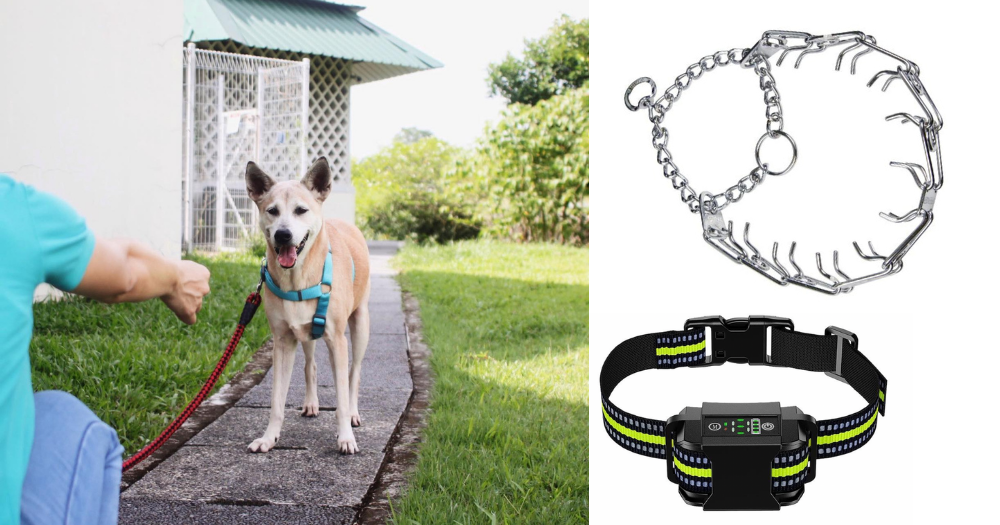To improve the welfare of pet dogs, various animal welfare groups, veterinarians and dog trainers have come together to develop new sets of guidelines on dog rehoming and adoption practices, as well as for dog training and behaviour rehabilitation.
These stakeholders are part of the Rehoming and Adoption Workgroup (RAWG), which is supported by the Animal & Veterinary Service (AVS), a cluster of the National Parks Board (NParks).
The RAWG was formed in October 2020 to improve dog rehoming and adoption processes. It was later identified that the RAWG should look into improving the standards of the dog training industry as well.
To draw up the guidelines, the RAWG communicated with its stakeholders and held nine focus group discussions, followed by an online public consultation from October to November 2021.
The public consultation had over 4,000 respondents, nine out of 10 of which were pet owners.
According to AVS, respondents were "highly supportive" of efforts to develop new guidelines, and their suggestions were incorporated into the guidelines as well.
The guidelines were launched today (Jan. 14), by the Minister of State for National Development Tan Kiat How.
Dog rehoming and adoption
The first set of guidelines is for the adoption and rehoming of dogs.
Previously, stakeholders involved in the adoption process decided their own guidelines for this, which would lead to varying levels of understanding and agreement.
The new guidelines thus help to address some of these issues by:
- Ensuring open communication between all parties — adopters and animal welfare groups — throughout the adoption and post-adoption process.
- Clarifying the roles and responsibilities of rehomer and adopter.
- Improving transparency about the health status of dogs by assessing and disclosing existing medical conditions and behavioural history to all parties before the adoption.
The guidelines provide animal welfare groups such as SPCA with more structure to their approach. They also help ease the transition of adopted dogs from welfare groups to their new home, and minimise the stress on the dog.
Dog training and behaviour rehabilitation
The second set of guidelines deals with dog training and behaviour rehabilitation.
It seeks to reduce the use of intrusive and aversive methods of dog training, such as beating or hitting dogs, or by using choke collars, as these techniques and devices cause pain, fear and distress to dogs.
The guidelines will also help educate dog trainers and owners on safe, science-based dog training.
Information on the science of animal learning and recommendations to use LIMA, which stands for Least Intrusive, Minimally Aversive, in animal training are included.
Additionally, there is a section which helps pet owners identify trainers who subscribe to this safer approach.
Angie Tan, a dog trainer at Puppylove Dog Training shared with the media that the industry can be rather "unregulated", and the use of more extreme training techniques can be detrimental to the growth and health of dogs.
The guidelines therefore ensure that all dogs trainers are on the same page as to what the best practices are.
Serve as reference guide
The guidelines are not prescriptive, NParks stated, but serve as a reference guide for the community, including animal welfare groups, dog adopters and owners, and dog trainers, to implement best practices.
Moving forward, AVS will work with stakeholders to further raise standards within the pet sector, as part of its Pet Sector Review which started in 2019.
AVS will be reviewing the current dog trainer accreditation scheme to benchmark to international standards. It will also be reviewing the use of dog training devices such as shock and prong collars.
The shock collar delivers an electric jolt remotely by the trainer as way of shocking the animal into compliance, while the prong collar has blunt metal hooks to be worn around the neck which is designed to pinch the skin around the dog’s neck to cause pain or discomfort when leash pressure is applied.
In 2020, some dog lovers tried wearing the shock and prong collars to test out the pain inflicted by such devices.
To promote responsible pet ownership and animal care, AVS will continue to conduct public education and outreach through webinars and such.
Related stories
Top photo from SPCA Singapore / FB, Shopee and Miscota
If you like what you read, follow us on Facebook, Instagram, Twitter and Telegram to get the latest updates.

